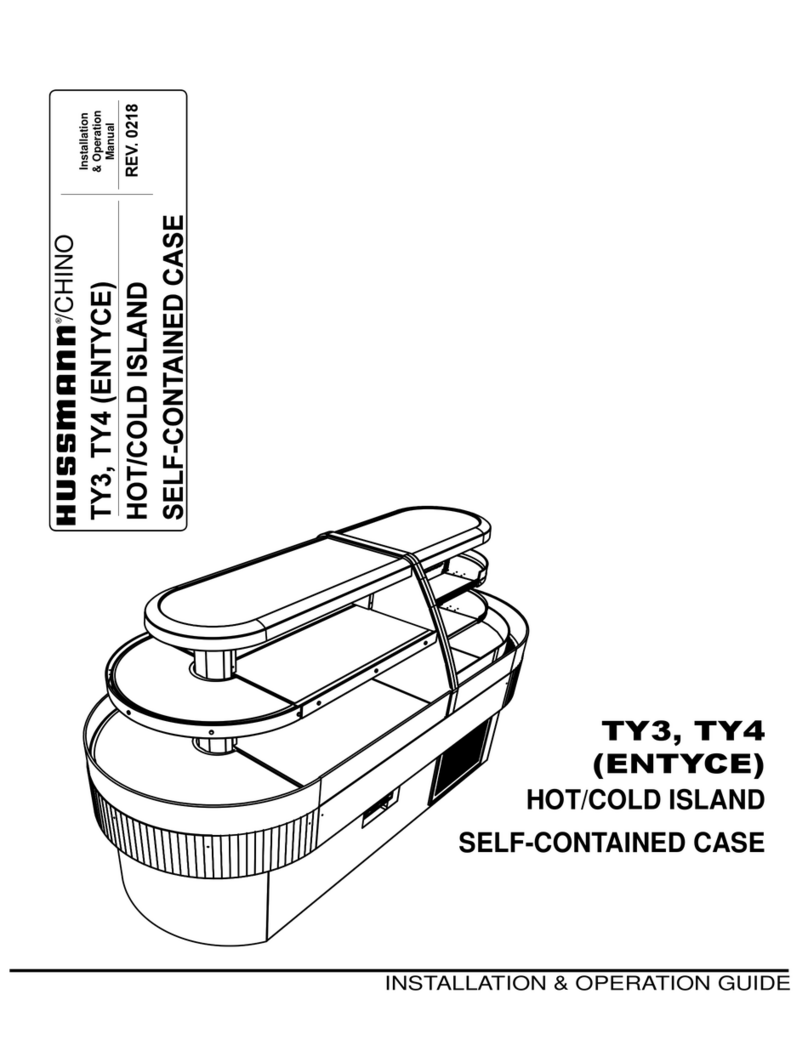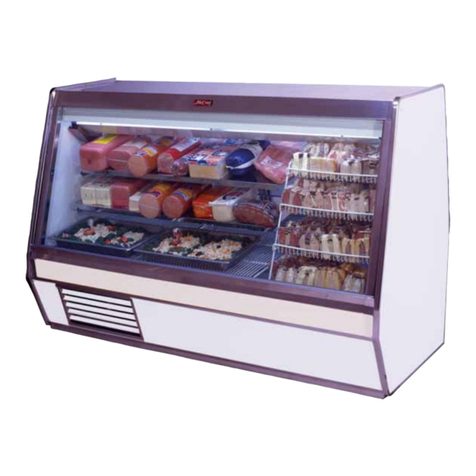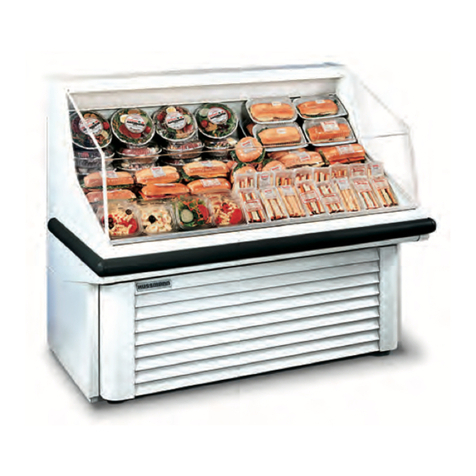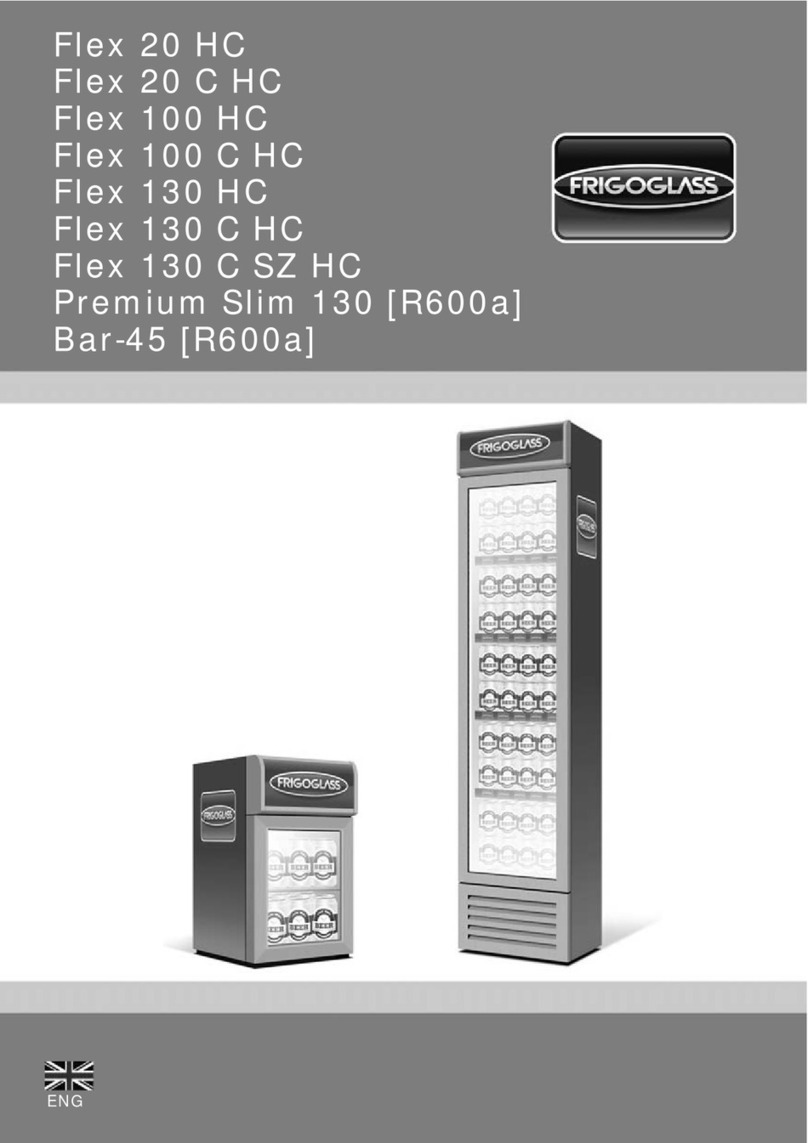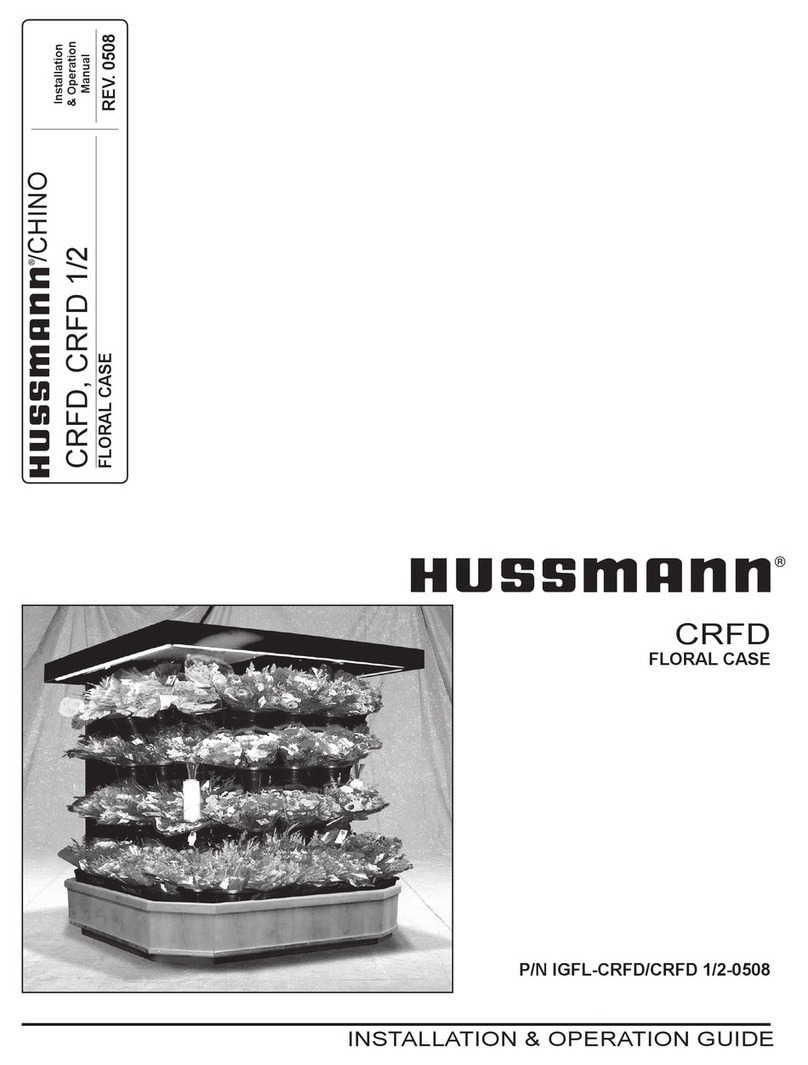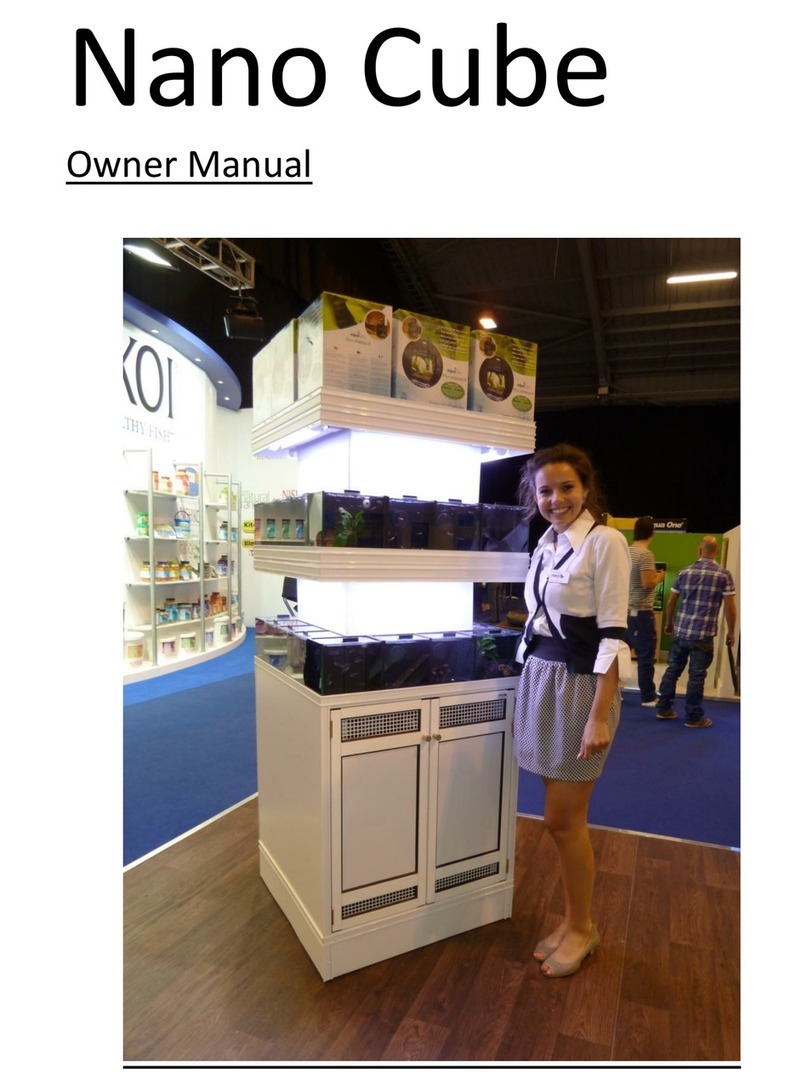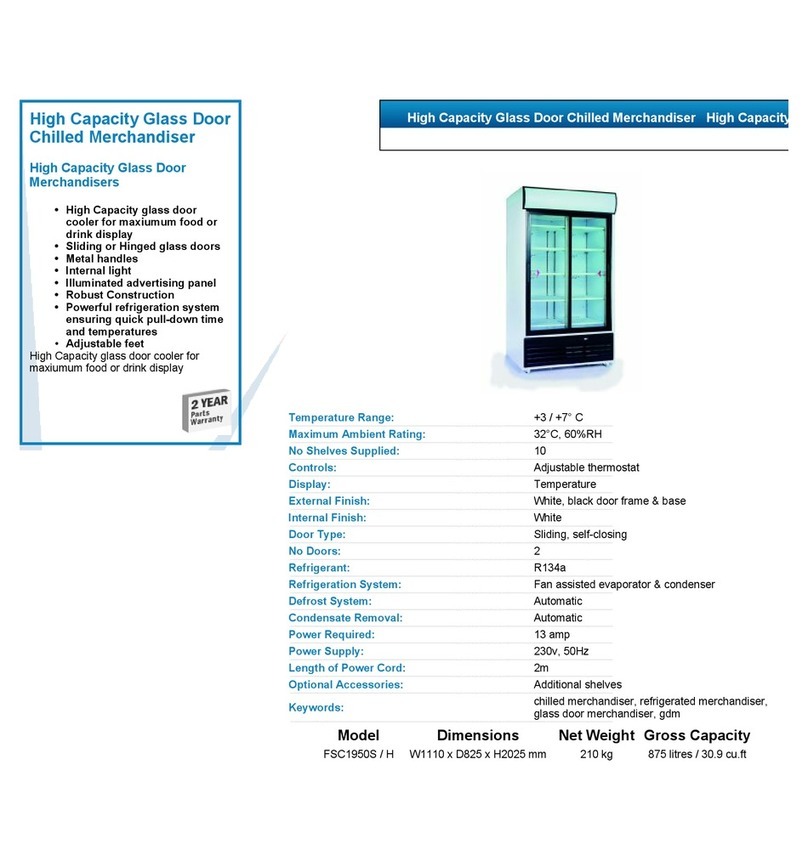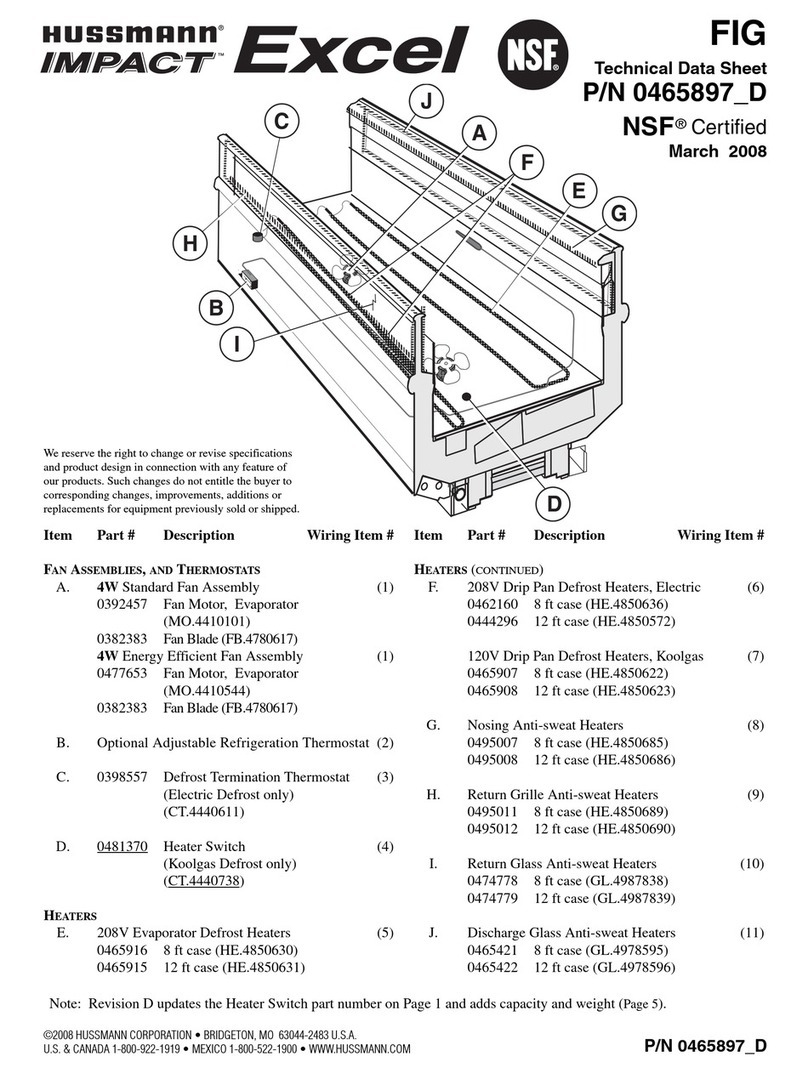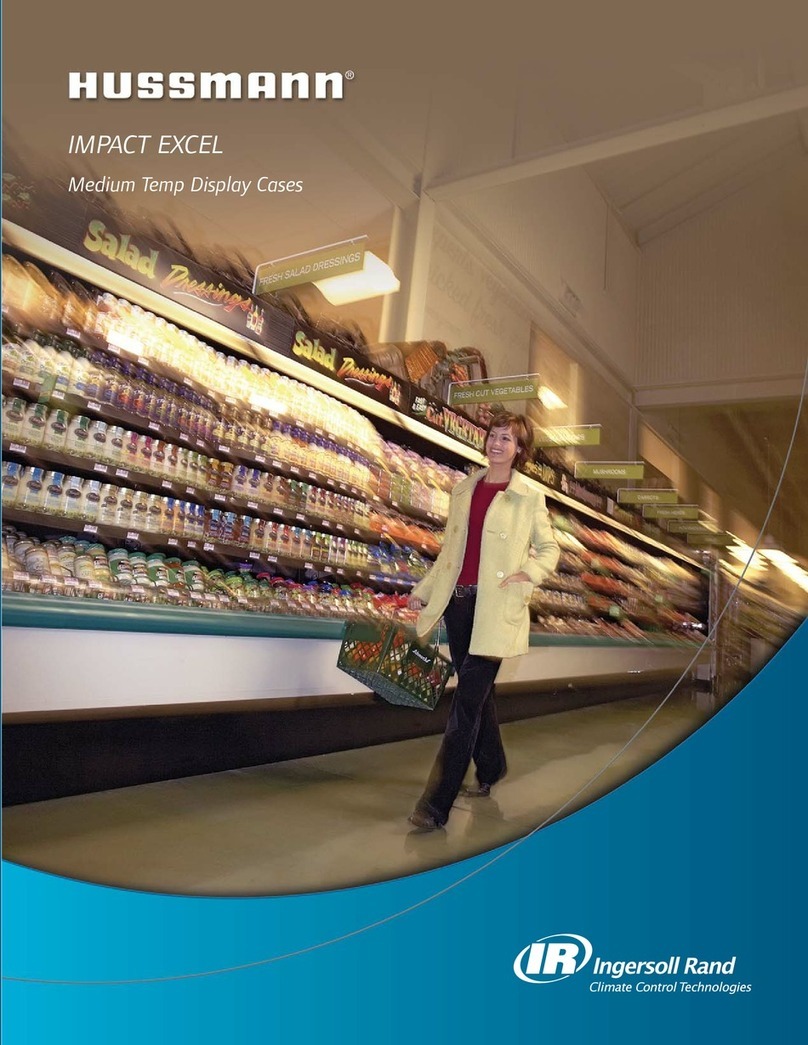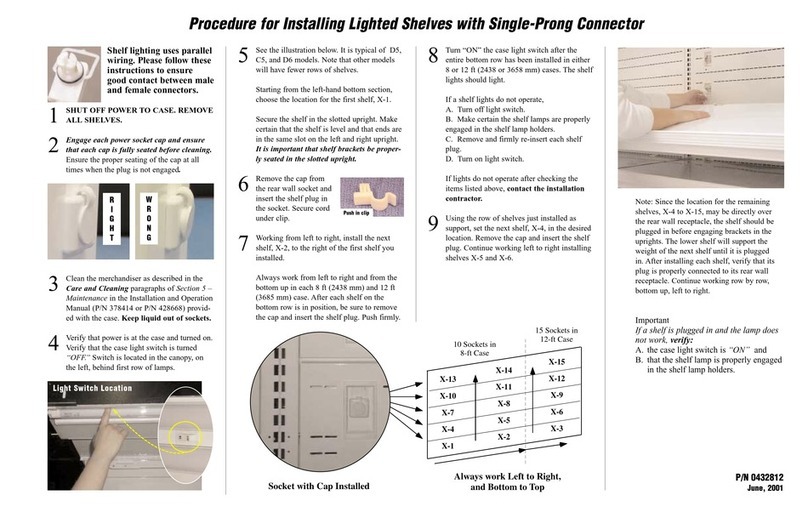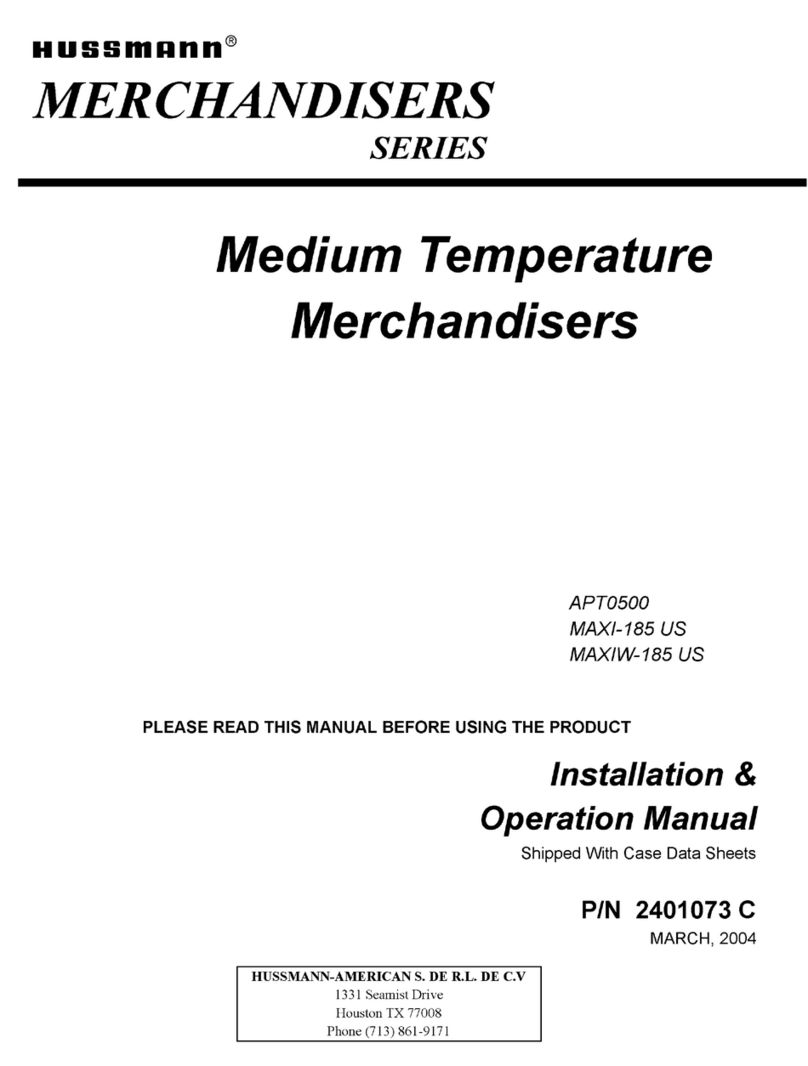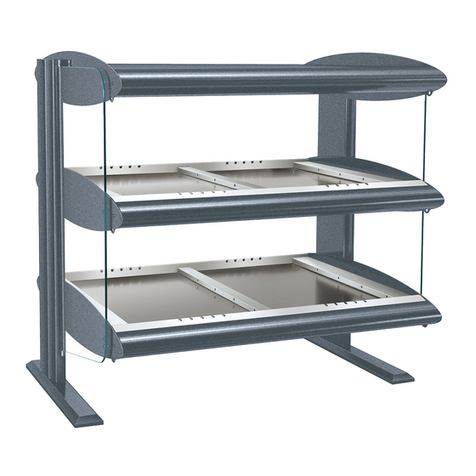
10 ORIGINAL INSTRUCTIONS
GB
PRODUCT CHARACTERISTICS
Refrigerated display cabinet is a professional product that allows for exposure of food products at the temperature, which is
extending their suitability for human consumption. Refrigerated display cabinet is not used to cool or freeze products, but only
to maintain the temperature of previously chilled food products. Due to electronically-controlled process for temperature mainte-
nance, the operation of the device is efficient and does not require operator’s intervention. Correct, reliable, and safe operation of
the device is dependent on its proper use, therefore:
Prior to working with the product, you should read all the instruction and keep it around.
For any damages or injuries caused by the product misuse, non compliance with with safety regulations and recommendations
included in this manual, the supplier does not accept any liability. Using the product incorrectly, causes also the loss of user’s
rights to the guarantee as well as a warranty.
EQUIPMENT
The product is supplied in a complete state and requires no assembly. Before using the product you should, however, remove all
packaging and protection for transport. They are also required preparatory steps described later in this manual.
GENERAL RECOMMENDATIONS FOR USE
The product has been designed for professional use and its operation should be carried out by properly qualified personnel.
The product is used only to store refrigerated food products. It is forbidden to store products other than food. In particular, do not
store in the product explosive substances such as an aerosol cans containing combustible gas or other flammable or explosive
substances. The product is not intended for storage of medical products, of blood and blood components.
In the cooling installation there is a flammable substance, which, due to the closed nature of the circulation of refrigerant, does not
constitute an immediate danger to the user, but you should observe the following recommendations.
WARNING! Do not block any ventilation openings in the housing of the product or in the built-in structure.
WARNING! In order to speed up the thawing process not to use any mechanical means other than those recommended by the
manufacturer.
WARNING! Protect against damage the cooling system.
WARNING! Inside the food storage compartment you should not use any electrical equipment of a different type than that, which
is recommended by the manufacturer.
It is forbidden to repair independently, perform removal or modification of the cooling system.
The product is not intended for use by children at least 8 years of age and persons with reduced physical abilities, mental abilities
and people with lack of experience and knowledge of the equipment. Unless there will be supervised or instruction will be carried
out regarding the use of the product in a safe manner so, so that the associated risks would be understood. Children should not
play with the product. Children without supervision should not carry out the cleaning and maintenance of the device.
Recommendations for transport and installation of the product
ATTENTION! Installation and connection of the product may be made only by qualified personnel.
The product should be transported only in working position. If during transport or installation it is necessary to tilt the product, do
not exceed the angle of 45 degrees. Regardless of how to carry out transportation and installation, you should wait at least two
hours between the setting of the product at the target site, and its connection to the power supply. This time is needed to stabilize
fluids inside the product systems.
Failure to observe this precaution can result in product damage.
The product should be transported avoiding shocks.
The product may only be placed on a hard, flat, even and non-flammable surface. The substrate should withstand the weight of
the device, and the food products it contains.
At the installation site of the product you should provide adequate ventilation, any vent should be obstructed. There should be
ensured a space of at least 10 cm all around the product and at least 30 cm above the product. This will allow for proper ventilation
of the product. On the product you should not place any objects.
It is forbidden to drill any holes in the product, as well as any other product modification, which is not described in the manual.
The place for the product installation should be selected so to would not be near any heat sources such ovens, heaters and near
open flame. The place of the product installation should not be directly directly exposed to the Sun’s rays. Otherwise, the product
performance may deteriorate, and operating costs may increase.
Humidity in the place of installation should not be greater than the relative humidity as provided for the climatic class of the prod-
uct. Explanation of the climatic classes meaning can be found later in this manual.
Guidelines for connecting the product to the power supply
Before connecting the product to mains, you should make sure that voltage, the frequency and the performance of the mains

